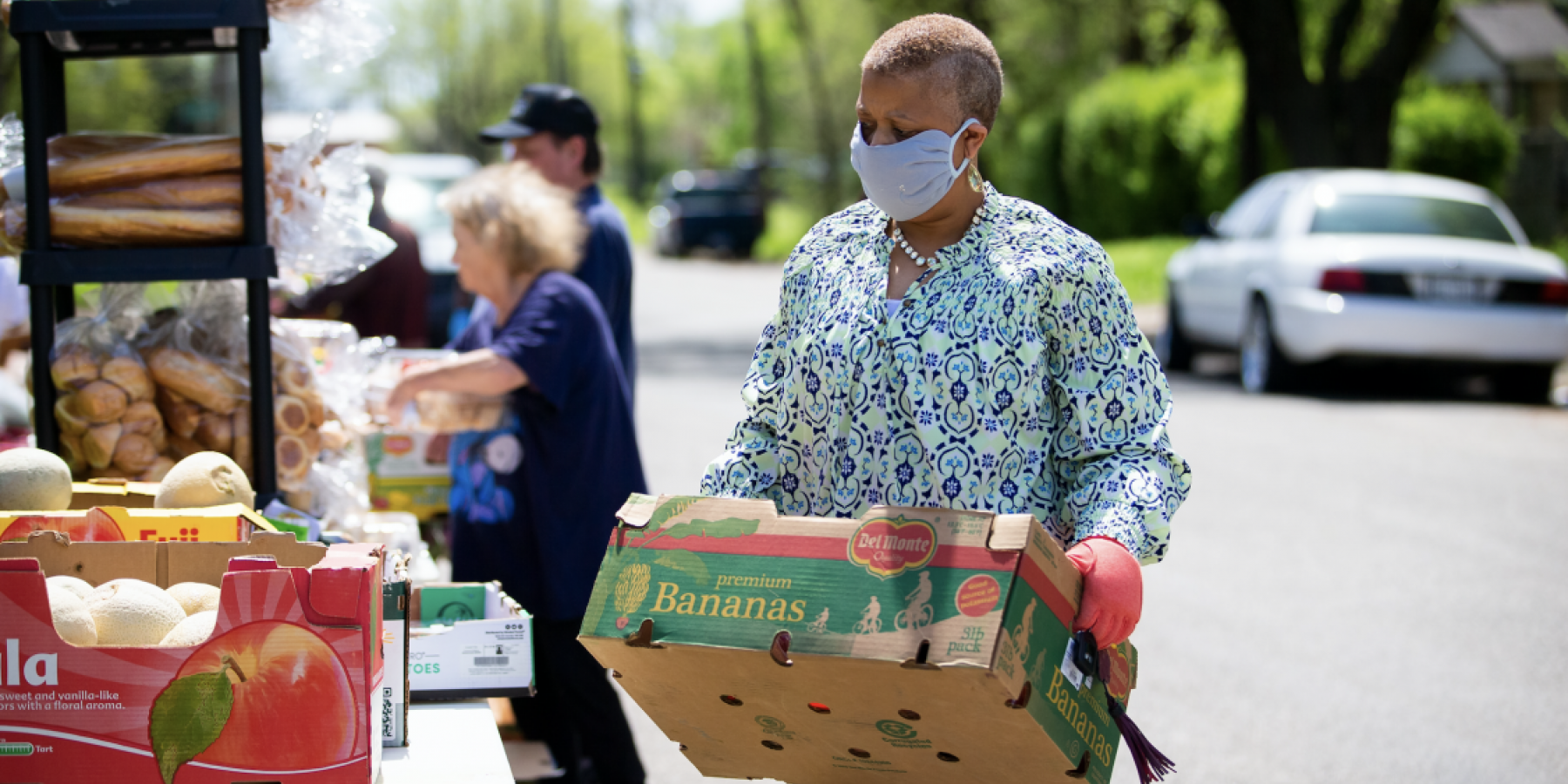As the COVID-19 pandemic expands, our understanding of who is most at risk is changing
18th May 2020

18th May 2020
Health workers were among the most at risk. Eventually, thousands of health workers in China would be infected, hundreds hospitalized, and dozens killed. This was a familiar pattern from many previous outbreaks, like Ebola in West Africa, as those on the front lines bore the brunt of the crisis.
Direct Relief was immediately able to send hundreds of thousands of pieces of PPE to 50 different health care sites, to protect front line health workers. At the time, this seemed like an enormous response in a country which rarely allows outside humanitarian assistance. But, it was only the very beginning.
During the response in China, the initial risk profile for COVID-19 became clear: people 65 and older, often with co-morbidities, tended to require hospitalization and acute medical care including ventilation, at far higher rates than the rest of the population.
The data from China fed immediately into Direct Relief’s response in the United States. In addition to having a health care system which is especially fragile for those with lower income, the US is also home to a very large population of people who are aging and managing one or more chronic illnesses. As early as mid-February, it was clear that, should COVID-19 reach the US, the impact could be severe.
The data from China fed immediately into Direct Relief’s response in the United States. In addition to having a health care system which is especially fragile for those with lower income, the US is also home to a very large population of people who are aging and managing one or more chronic illnesses.
Data from the Center for Disease Control presents the strong connection between coronavirus, age and co-morbidities. Hospitalization rates, for instance, increase steadily for each 10-year age bracket above 65, with 12.2% of COVID-19 cases hospitalized for those between the ages of 65 and 74, rising to 17.2% for those over 85. 89% of all patients hospitalized for COVID-19 had at least one underlying medical condition, rising to 94.4% for patients over 65. The most frequently reported conditions, as in China, were hypertension, obesity, diabetes and asthma.
COVID-19 transmission risk evidently intersects with chronic illness, demographics and economics to produce well-defined landscapes of social vulnerability to the pandemic. For example, current estimates show that diabetes among African Americans and Latinos averages between 17-18%, more than double the rate for non-Hispanic whites. These same groups are also more likely to work in occupations which are deemed during the pandemic as “essential”, such as the middle and lower ranks of health care or in services and logistics, which means they are less able to socially distance. These factors mean a higher risk for hospitalization and acute complications from COVID-19.
COVID-19 transmission risk evidently intersects with chronic illness, demographics and economics to produce well-defined landscapes of social vulnerability to the pandemic.
Direct Relief routinely supports safety net health facilities, many of which are located by law in “medically underserved areas,” which follow broader lines of medical and social vulnerability throughout the country. Most often the composition of the health workforce reflects the composition of the surrounding community. That means that health workers in general are more likely to be exposed to the virus, and that health workers in African American and Latino communities are more likely to experience acute complications.
As the geography of the virus now shifts to poorer areas in the Global South, so too must the understanding of risk and vulnerability. While risks associated with age and chronic disease burden may not shift dramatically, what is shifting are the secondary effects from mobility controls and medical shortages in poorer countries, along with an elevated set of risks associated with the high number of people in the Global South living in immune-compromised conditions, particularly as a result of HIV/AIDS.
As the geography of the virus now shifts to poorer areas in the Global South, so too must the understanding of risk and vulnerability.
The UN World Food Programme (WFP) predicts that as many as 265 million people may be at risk of famine as mobility controls disrupt access to basic calories and nutrition, and increasing food insecurity degrades the immune systems of people of all ages. While countries in the Global South tend on average to be much younger than Europe, China and the US, they also face the world’s highest burdens of chronic HIV and endemic tuberculosis and malaria. In Sub-Saharan Africa at the moment an estimated 24 million people are living with HIV. Each one of them, regardless of age, occupies the highest risk group for acute complications from COVID-19.
At the same time, dozens of countries have placed export controls on essential supplies of PPE, which has caused increasing prices globally. Governments now find themselves struggling to allocate scarce health budgets to cover rising costs.
In order to meet the challenges of the pandemic, we must continue to adapt our understanding of who is most at risk based not only on the characteristics of the virus, but on the characteristics of our societies.
Dr. Andrew Schroeder (@DirectRelief) has developed and implemented a number of projects at Direct Relief to demonstrate programmatic impact, including Mapping Global Prevention of Mother-to-Child Transmission (PMTCT) of HIV/AIDS; Spacial Analysis of the Global Diflucan Distribution Programme; development of GIS-based laboratory monitoring in Ethiopia; and USA Safety Net Mapping, with was cited in the New England Journal of Medicine. Schroeder has also presented findings from his research ar Direct Relief at prominent conferences, including the Global Health Council and the InterAction Forum.